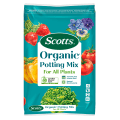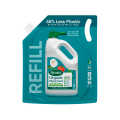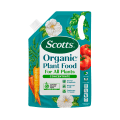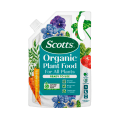

How to Grow & Care for Buxus
Buxus (Buxus species), often called Box Plants or Box Hedges are small growing evergreen trees or shrubs. Buxus are commonly grown as low hedging or edging plants that are clipped regularly to maintain a shape. They are often used in formal or cottage garden settings and can be used for topiary or potted displays too.
All Buxus prefer a full sun location, but they’ll tolerate a partly shaded spot too. Most species are slow growing (except Japanese Box) and they’re very easy to grow. There are 4 main Buxus planted in Australia and they vary a little in the leaf size, speed of growth and mature height.
- English Box (Buxus sempervirens) - Grows up to 1.5m tall by 75cm wide - a slow growing evergreen shrub with glossy, dark green oval foliage. Very dense growth habit and shade + frost tolerant once established.
- Japanese Box (Buxus microphylla japonica) - Grows up to 1 metre tall by 70cm wide - prefers a full sun spot and is the fastest growing buxus. Remember though, this means it will need more regular pruning. Tolerates frost and it’s considered a drought tolerant buxus, once established. More lime green leaves than other buxus.
- Dutch Box (Buxus sempervirens suffruticosa) - Grows up to 50cm tall by 50cm wide - a slow growing buxus with glossy green, oval foliage and a very dense growth habit. Shade tolerant and great in cooler climates.
- Korean Box (Buxus microphylla micro) - Grows up to 60cm tall by 40cm wide - more tolerant of areas with warmer summer than English Box. Will tolerate full sun to part shade + frost tolerant.
Top 5 steps to growing Buxus
- Select the buxus species that will perform best in your climate, available light and garden situation
- Buxus prefer a full sun position, but some are more shade tolerant than others.
- Buxus can be grown in pots or planters, just use a suitable potting mix like Scotts Osmocote Premium Potting Mix and choose a pot with good drainage
- Fertilise buxus at twice a year in spring and summer with an all purpose garden bed fertiliser like Scotts Osmocote Plus Organics All Purpose (including Natives) Plant Food & Soil Improver
- Regular light pruning / trimming is required to maintain your buxus’ dense growth and overall shape.
Shopping List
- A Buxus plant to suit your climatic conditions and garden size - remember if you’re growing a buxus hedge to calculate the number of plants you’ll need based on the recommended spacing for hedges of your chosen buxus species
- To fertilise - Scotts Osmocote Plus Organics All Purpose (including Natives) Plant Food & Soil Improver or Scotts Osmocote Controlled Release Fertiliser: Garden Beds.
- To improve the soil before planting - Scotts Osmocote Compost Premium Soil Improver
- Garden Shovel
- If growing in pots, you’ll need Scotts Osmocote Premium Potting Mix + Scotts Osmocote Plus Organics All Purpose (including Natives) Plant Food & Soil Improver and a suitable pot or container
- Mulch
- Defender Pyrethrum Insect Spray
Preparation
- Buxus plants need a full sun to part shade position (depending on the species you’ve chosen). They’ll tolerate a range of soil conditions, but buxus will perform best if the soil is free draining and rich in nutrients and organic matter.
- Prepare the soil for planting buxus by mixing Scotts Osmocote Compost Premium Soil Improver and Scotts Osmocote Plus Organics All Purpose (including Natives) Plant Food & Soil Improver through the soil in your chosen area.
Planting in the garden
Plant your buxus into the prepared soil - dig the hole twice as wide as the original pot and the same depth. Gently remove the buxus from the nursery pot and tease the roots lightly if they are compact.
Plant into the hole and backfill around the plant. Water in well and keep the soil moist (but not soggy) for the first few weeks after planting to help establish new roots.
Mulch around the drip zone of buxus to retain moisture and suppress weeds, but keep the mulch away from the main stem.
Planting in pots
Buxus can be grown in pots or planters with good drainage - choose a pot that’s at least 2 to 3 times bigger than the original nursery pot. Select the buxus species best suited to your climate and growing position.
Fill your pot or planter with Scotts Osmocote Premium Potting Mix. Gently remove the buxus from the nursery pot and tease the roots lightly if they are compact. Plant the buxus into the potting mix and backfill around the plant. Water in well and mulch over the surface of the potting mix to help retain moisture, but keep the mulch back from the plants main stems.
Fertilising & Care
Buxus will benefit from fertilising once a year in spring with Scotts Osmocote Plus Organics All Purpose (including Natives) Plant Food & Soil Improver or Scotts Osmocote Controlled Release Fertiliser: Garden Beds.
Young buxus plants can change colour with autumnal tones during very cold winters - this bronzing is normal with cold weather. Apply a top dressing of compost and dolomite lime (if your soil has a pH lower than 7.5) in autumn to help reduce the cold season discolouring. Fertilising in spring and the warmer weather should see your buxus foliage turn green again.
Pests & Diseases
Buxus Blight is a fungal disease that causes the discolouration of buxus leaves to brown and then black, before they fall off the plant. It can often be confused with cold discoloration that naturally happens in winter, but you’ll know it’s Buxus Blight when the discolouring continues well into spring.



